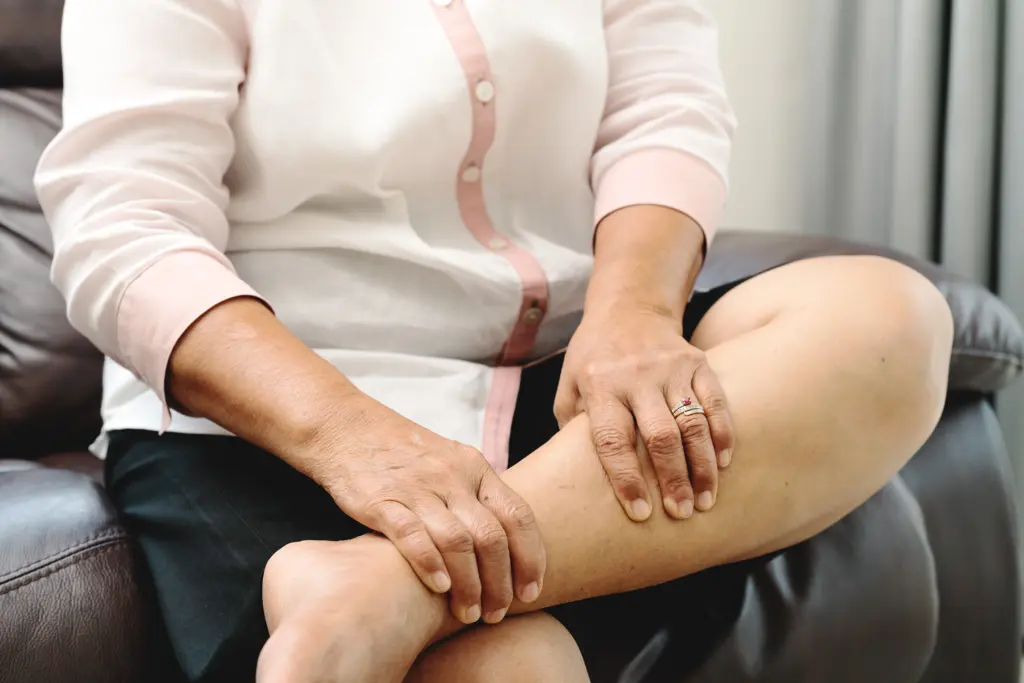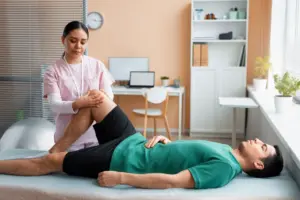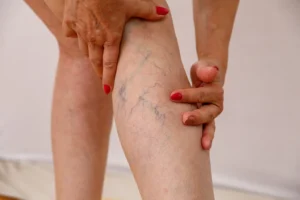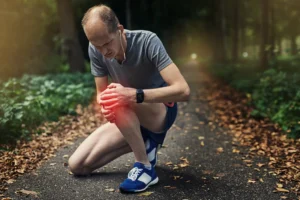
Leg swelling: Deep Vein Thrombosis (DVT) is the diagnosis most people fear when a leg suddenly swells. It is an emergency, but it’s far from the only cause of oedema. In the clinic, the common alternatives are chronic venous insufficiency (CVI), lymphedema, and systemic fluid retention from heart, kidney, liver, or thyroid disease. Knowing the pattern helps you (and your doctor) get to the right treatment fast.
First: rule out emergencies
Seek urgent care if swelling is sudden and accompanied by one-sided pain, warmth or colour change; breathlessness or chest pain (possible pulmonary embolism); fever with a hot, tender leg (cellulitis); or if you’ve had recent surgery, fracture, or long immobility. Once dangerous causes are excluded, we read the pattern.
Also Read | Our Expert Article: Dr Dharmesh Davra on tips to prevent varicose veins
How doctors tell them apart: Fast pattern spotting
Start with which leg(s) are involved and how the swelling behaves through the day.
CVI typically loads the ankle and lower leg, is worse by evening, and eases with elevation or proper medical compression. It usually pits early on. Skin often shows the venous story, varicose veins, ankle darkening/itching, and in advanced cases, tight, woody changes near the inner ankle. The toes are usually spared.
Lymphedema begins at the foot, creeping upward; the dorsum and toes swell so toes look squared or “sausage-like.” Early stages may pit, but later the tissue feels brawny and non-pitting. A classic bedside clue is a positive Stemmer sign (you can’t lift a skin fold at the base of the second toe). Elevation helps only partially; untreated, infections like cellulitis recur.
Systemic edema (heart/kidney/liver/thyroid) more often affects both legs and fluctuates with overall fluid status. It tends to pit, and the rest of the body gives it away, breathlessness or difficulty lying flat with heart failure, puffy eyelids and frothy urine with kidney protein loss, abdominal fluid (ascites) with liver disease, or generalised, doughy swelling with fatigue in hypothyroidism.
Those simple clues, laterality, timing, pitting, skin changes, foot/toe involvement, response to elevation, and associated symptoms, usually point us to the right pathway.
Chronic Venous Insufficiency (CVI): when leg veins leak backward
The problem: Faulty one-way valves let blood fall back with gravity, raising venous pressure and injuring skin over time.
What helps: Re-train the calf-muscle pump (daily walking, ankle pumps; avoid long standing), use graduated medical compression fitted after arterial safety is confirmed, elevate legs when you can, and tackle weight and waist. When symptoms, reflux maps, or ulcers justify it, endovenous treatments (RFA/EVLA, foam, glue) are day-care options that close the culprit veins and relieve pressure. Dedicated ulcer care speeds healing.
Lymphedema: when lymphatic drainage fails
The problem: Protein-rich fluid accumulates because the lymph system can’t clear it, after surgery, radiation, infections (including filariasis), long-standing venous disease, or due to primary lymphatic development issues.
What helps: Complete Decongestive Therapy (CDT) is the foundation: meticulous skin care, manual lymphatic drainage, multi-layer compression bandaging/garments, and targeted exercise. Home pneumatic compression suits selected patients. In well-chosen cases, lymphatic microsurgery (lymphaticovenous bypass, vascularized lymph node transfer) or suction-assisted lipectomy helps late fibroadipose stages. Avoid skin breaks, tight footwear, and “casual” diuretics, they don’t fix lymph flow and can concentrate proteins in tissues.
Systemic fluid retention: heart, kidney, liver, thyroid, and some drugs
When both legs swell and the limb itself lacks venous/lymphatic stigmata, think body-wide causes. Heart failure produces ankle edema with breathlessness; kidney disease may show morning eyelid puffiness; liver disease lowers albumin, giving leg edema with ascites; hypothyroidism adds fatigue and weight gain. Some medications commonly amplify ankle swelling—amlodipine and other calcium-channel blockers, NSAIDs, steroids, thiazolidinediones, certain hormones (don’t stop anything without medical advice). Improvement hinges on treating the underlying disorder and adjusting fluids under specialist guidance.
Other look-alikes to keep on the radar
- Lipedema: symmetric, tender “fatty” legs that spare the feet and bruise easily, different from fluid accumulation.
- Baker’s cyst/meniscal injury: behind-knee fullness with calf swelling.
- Cellulitis/erysipelas: hot, red, painful skin with fever, needs antibiotics.
- Iliac/pelvic vein compression (e.g., May–Thurner): one-sided swelling that may require pelvic venography and stenting even without a frank DVT.
How a vascular clinic confirms the impression
History nails the pattern; examination checks pitting vs non-pitting, distribution, skin changes, pulses, and the Stemmer sign. Imaging and labs are then targeted to the suspected pathway, venous duplex with reflux mapping when features are venous, lymphatic imaging when planning surgery for lymphedema, or cardio-renal-hepatic tests if a systemic driver is likely. Compression is prescribed only after arterial safety is documented.
Also Read | Our Expert Article: Dr Dimple Chhatwani on What IVF Means for Couples Trying to Conceive
What you can safely start now
- Move the calf-pump: walk daily; do 10 ankle pumps every hour when seated.
- Elevate legs above heart level for 20–30 minutes when possible.
- Use medical-grade compression once your clinician clears arterial flow; wear from morning to evening.
- Protect skin: moisturize; treat fungal web-space infections promptly; trim nails carefully.
- Lighten the load: a 5–7% weight loss eases venous pressure; add simple calf-strength work.
- Travel smart: aisle seat if possible, walk hourly, in-seat calf raises; consider medical compression for long flights.
- Avoid: self-starting diuretics, tight non-medical “slimming” stockings, and delays if swelling is new, one-sided, or painful.
Not all swollen legs are DVT. CVI responds to compression, calf-pump retraining, and (when needed) minimally invasive endovenous correction. Lymphedema needs structured, compression-based therapy and, in select cases, lymphatic surgery. Systemic edema improves only when the underlying heart, kidney, liver, or thyroid issue is treated. Read the pattern, confirm safely, and treat the true cause from day one.
Medical Disclaimer
This article is for general education and does not replace a personal consultation. Compression, medicines (including diuretics), and procedures should be used only under doctor supervision based on your examination and test results.






